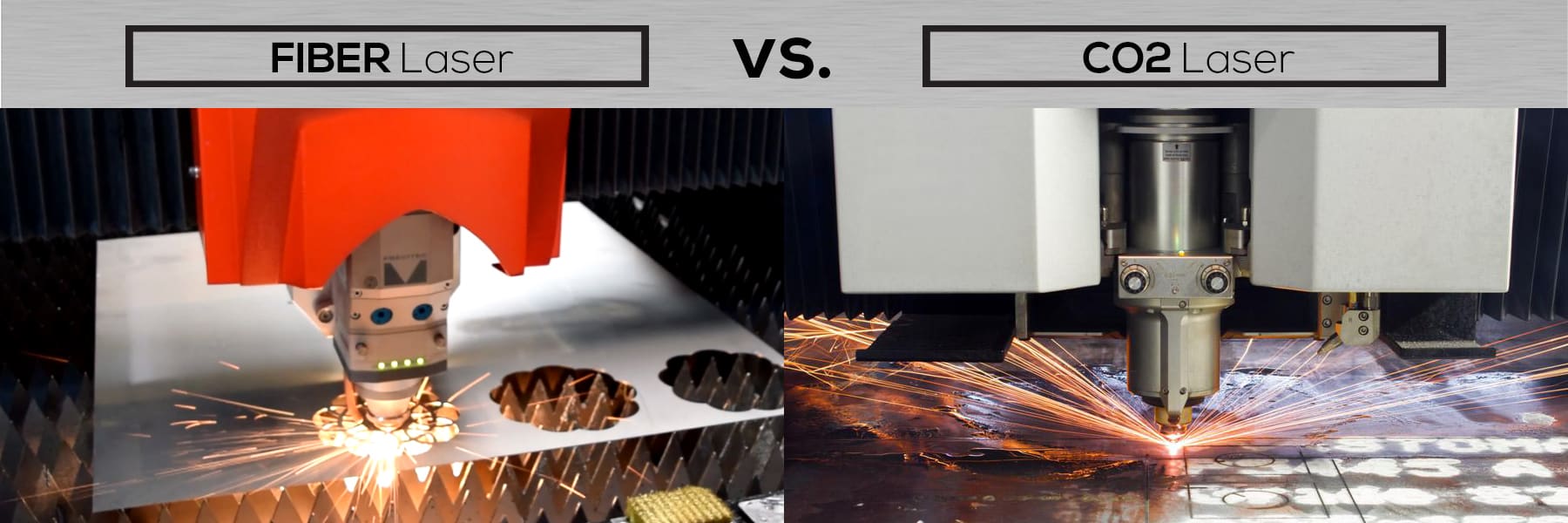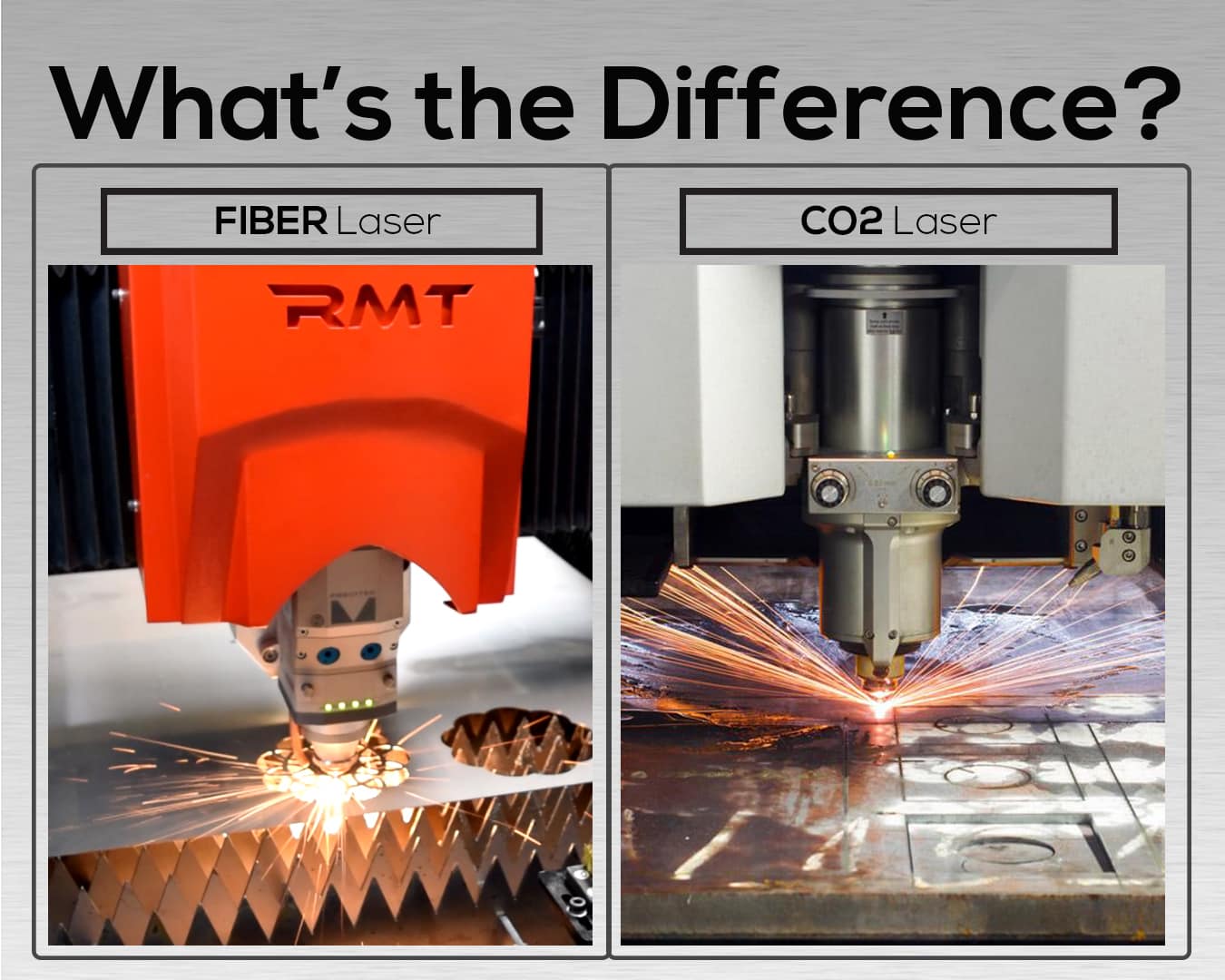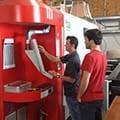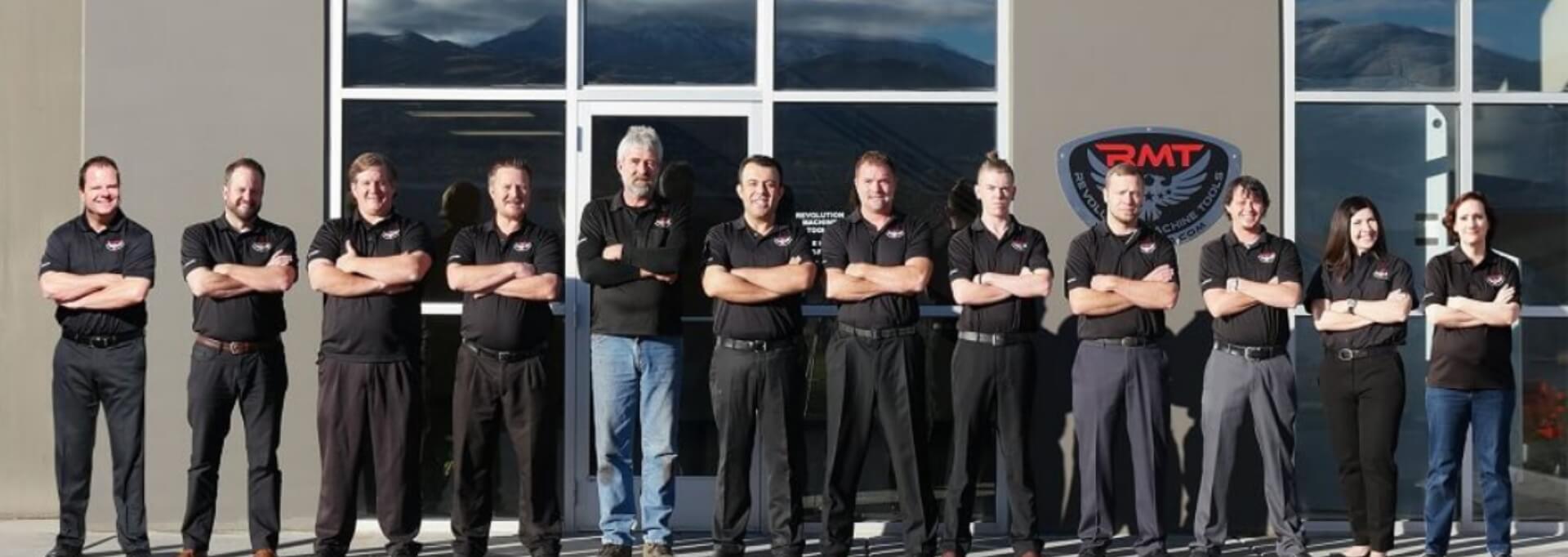Size Matters
When it comes to metal cutting lasers, the biggest difference between the various types is the wavelength of their beams. The term “laser” is an acronym that stands for “light amplification by stimulated emission of radiation,” describing a process where light is amplified or gains power by bouncing its photons back and forth through a lasing material (also called a gain medium) before being released as a coherent beam of light. When a photon introduced into the lasing material encounters an atom, it causes it to change its state and shed a new photon that matches the wavelength of the original. As the process repeats, more photons are released, increasing power until the amplified light is discharged as a laser beam.
Lasers are usually named after their lasing material, the composition of which determines the wavelength of the light that is produced. The lasing material can be a solid, liquid, gas, or even semiconductor based. Carbon dioxide mixed with other gases serve as the gain medium of CO2 lasers, while a spool of optical fiber doped with rare earth elements like erbium or ytterbium is the gain medium for a fiber laser.
The wavelength of light produced by a carbon dioxide-based laser is usually 10,600 nanometers, while fiber lasers usually produce beams with a wavelength of 1,060 nm, only one-tenth the size of CO2. Nd:YAG lasers—which use a neodymium-doped synthetic yttrium aluminum garnet crystal for the lasing material—have a wavelength of 1064 nm, similar to fiber lasers. Argon-based lasers usually produce 488nm wavelengths, while an argon fluoride laser creates an incredibly small 193 nm wavelength.
The different sizes in wavelengths determine what types of materials each laser can process, so there is no right answer to the question of which laser is better, fiber or CO2. They are each better for certain projects, so the wise fabricator considers all options before making a laser purchase.
Advantages of Fiber Lasers
- Beams from fiber lasers have a smaller wavelength, allowing them to be absorbed by and cut shiny metals like copper and brass that can easily reflect a CO2 laser beam.
- Fiber lasers are better at cutting thinner materials.
- They can perform surface engraving on workpieces.
- Fiber lasers have lower operating costs (often around 50% of CO2 lasers).
- They have lower maintenance costs.
- They have fewer consumables to replace.
- Fiber lasers have a faster set-up time.
- A fiber laser will generally have a faster overall cutting speed (up to two or three times that of a CO2 laser) due to the higher absorption rate of its smaller beam.
- The beam of a fiber laser leaves a narrower kerf, allowing for better nesting of parts.
- Fiber lasers don’t have mirrors, so they don’t require the constant realignment that is necessary with CO2 lasers.
- Fiber lasers can be built to be much more powerful than their CO2 counterparts.
- Both larger and smaller table sizes are available with fiber lasers than CO2 lasers due to the flexibility of the delivery fiber optics.
Advantages of CO2 Lasers
- CO2 laser beams have a larger wavelength that is within the absorption range of non-metallic materials like wood, stone, glass, acrylic, plastic, paper, textiles, leather, and organic substances, things fiber lasers cannot usually cut.
- CO2 lasers are more efficient at cutting medium to thick materials (those that are thicker than 6.0 mm or 1/4″).
- CO2 lasers leave a finer cut edge quality, especially with thicker materials.
- They are better for cutting plastic-coated stainless steel in a single cut.
- They have a lower purchase cost, making them better for shops with limited production needs (though operating costs are higher).
- They leave a uniform cut quality on all materials regardless of the density of the workpiece.
- CO2 lasers have a faster speed when cutting in a straight line.
- They have faster penetration time once a cut has been started.
- While eye protection is still needed with a CO2 laser, the wider wavelength of the beam does not pose as big a risk for blindness as does the beam of a fiber laser.
- CO2 lasers have been in use longer, giving some owners more peace of mind, knowing that their technology continues to produce predictable results.
Lighting the Future
The day of the CO2 laser isn’t over yet. Even with the rise and continual improvement of the fiber laser, some traditional fabricators still prefer CO2 cutting. Fabricators cutting thicker material still need them, as do those who want to cut non-metals. Small desktop CO2 models are now available for hobbyists to use to engrave wooden crafts, so carbon dioxide-based lasers will likely be available for decades to come.
Fiber lasers continue to take over larger and larger shares of the market, however, and they continue to see new technological advances year after year. Serious fabricators should learn everything they can about the benefits of fiber optic lasers before deciding on purchasing any laser cutting machine. They would also be well-advised to keep abreast of the technology, even if they opt for going the CO2 route. Fiber lasers are decidedly the wave of the future and will dominate the industry before too many years have passed.







